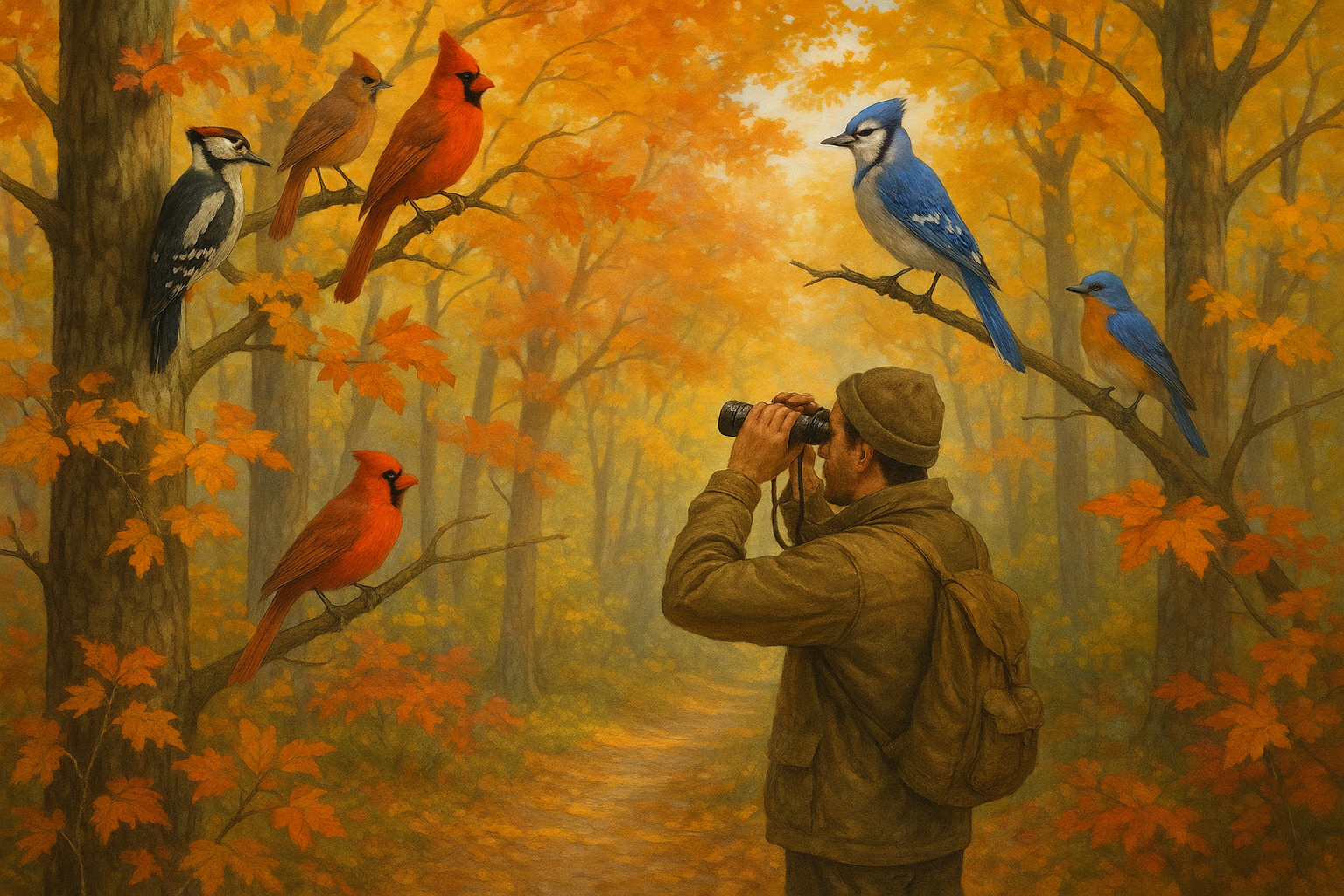As autumn gives way to winter, the needs of backyard birds change. Migration winds down, natural food sources dwindle, and colder nights increase the demand for high-energy foods. By adjusting your bird feeding routine, you can help local and visiting species thrive through the toughest months of the year.
At Trail Optics, we believe the change of seasons is one of the most rewarding times to be a backyard birder. Here’s how to smoothly transition your feeders from fall to winter.
Swap in Winter-Friendly Foods
Birds require more calories in cold weather to maintain body heat. The best choices for winter include:
- Black oil sunflower seeds: High in fat and easy for many birds to eat.
- Suet cakes: Dense energy sources perfect for woodpeckers, wrens, and nuthatches.
- Peanuts: Unsalted, shelled peanuts give protein and energy boosts.
- Nyjer seed: Keeps finches visiting throughout the colder months.
- Fruit: Apples, berries, and orange slices attract robins and waxwings.
Cut back on lighter fall foods like millet or cracked corn, which don’t offer as much energy in freezing conditions.

Weatherproof Your Feeders
Winter brings snow, ice, and freezing rain. Protect your feeders, make sure to check our other article here or use:
- Weather guards: Domes or covers that shield seed from moisture.
- Drainage holes: Essential for preventing water buildup in trays and hoppers.
- Stable mounts: Strong poles or hooks that keep feeders upright in high winds.
Maintenance is More Important Than Ever
Cold weather means feeders are used heavily. To keep them safe:
- Clean often: Wash feeders every 2–4 weeks, more if seed gets wet.
- Refill consistently: Birds rely on dependable food during storms.
- Check for damage: Freezing temps can crack plastic or warp wood.
Make Water Available
Water is often overlooked in winter, but it’s just as important as food. Provide a heated birdbath or break ice regularly so birds have access to fresh water.

How Smart Feeders Help in Winter
Winter birdwatching can be tough — unless you have a smart feeder. With Trail Optics smart feeders, you get:
- Real-time notifications when birds visit, even in bad weather.
- Built-in cameras to capture cold-weather species up close.
- Durable construction that keeps seed dry and accessible in harsh conditions.
Instead of constantly checking feeders outside, you can enjoy winter bird activity from the warmth of your home.
Transitioning your feeders from fall to winter is about more than just food — it’s about preparation. By choosing calorie-rich foods, weatherproofing feeders, and keeping everything clean, you’ll ensure your backyard remains a lifeline for birds all season long.
With Trail Optics smart feeders, you can make the transition easier, smarter, and more enjoyable — giving you a front-row seat to the beauty of winter birdwatching.



Leave a comment
This site is protected by hCaptcha and the hCaptcha Privacy Policy and Terms of Service apply.